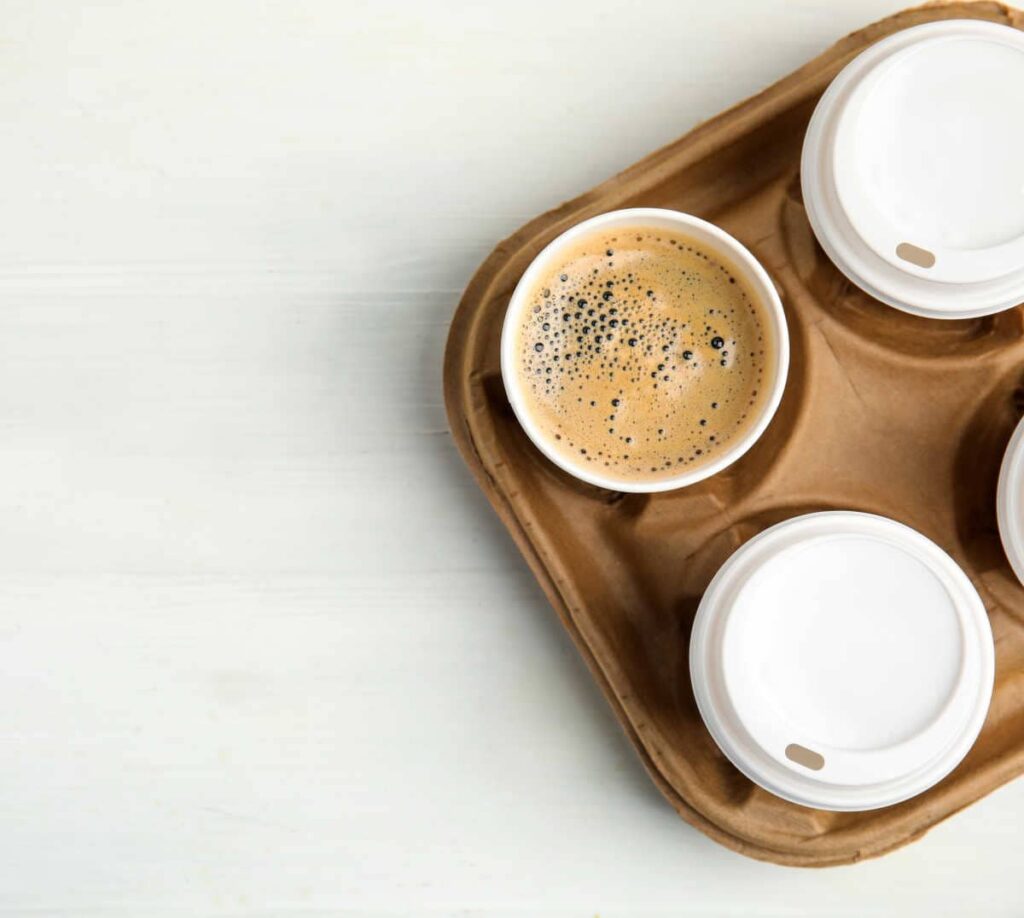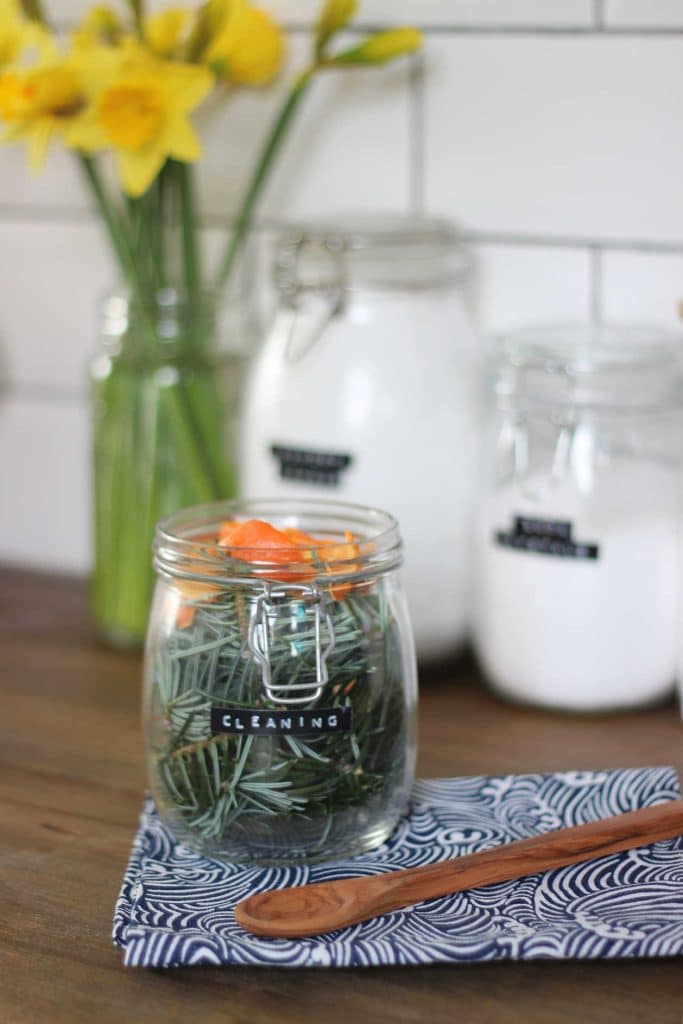6 Plastic-Free Ways To Remove Makeup Sustainably
To support the running costs of Moral Fibres, this post contains affiliate links. This means Moral Fibres may earn a small commission, at no extra cost to readers, on items purchased through these links.
Here’s how to remove your makeup the zero-waste way, with my handy plastic-free tips.
When it comes to zero-waste and plastic-free makeup, we’ve never had as many options as there are now. There are heaps of different brands offering innovative sustainable solutions – from refillable options to compostable packaging. It’s an exciting time to be a beauty fan.
Yet, when it comes to plastic-free makeup remover, I feel like the industry hasn’t caught up. Beyond the wide availability of reusable cotton pads, there is considerably less in the way of makeup removal products. Given the scale of plastic waste in the beauty industry, it’s disappointing that many brands have overlooked this key part of our beauty routines.
To help you out, I’ve got some clever tips up my sleeve to help you cut plastic from your cleansing routine, as well as some effective zero-waste products from eco-conscious brands.
Plastic-Free Makeup Remover Options
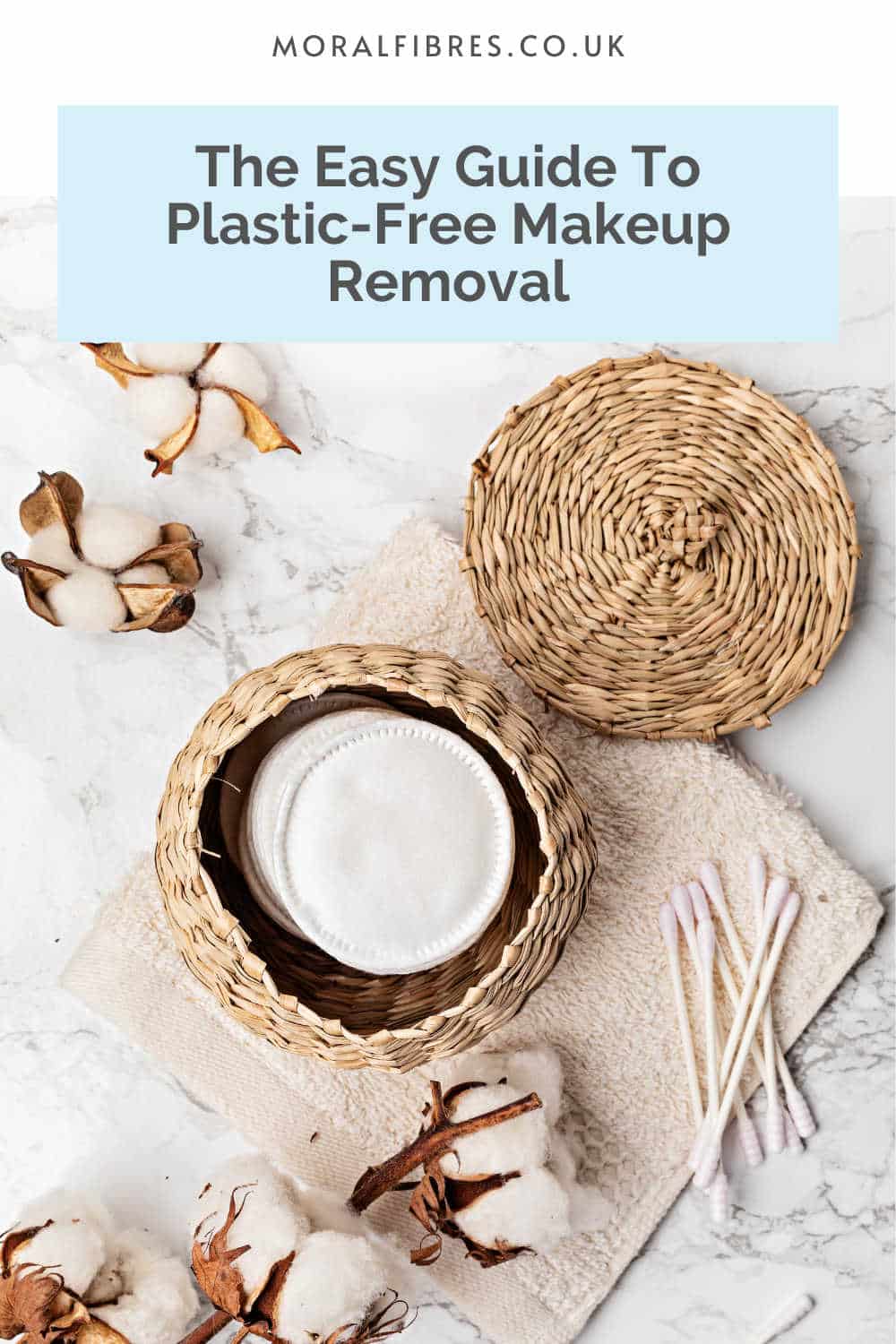
Here are my tried and tested top tips, techniques, and favourite products to help you zero-waste your skincare. These will leave your skin and the planet looking spotlessly clean!
Use the quick links to jump to a specific section or keep scrolling for the full post:
- Soap
- Natural Oils
- Solid Makeup Remover Bars
- Plastic-Free Cleanser
- Eco-Friendly Micellar Water
- Reusable Makeup Remover Pads
1. Soap
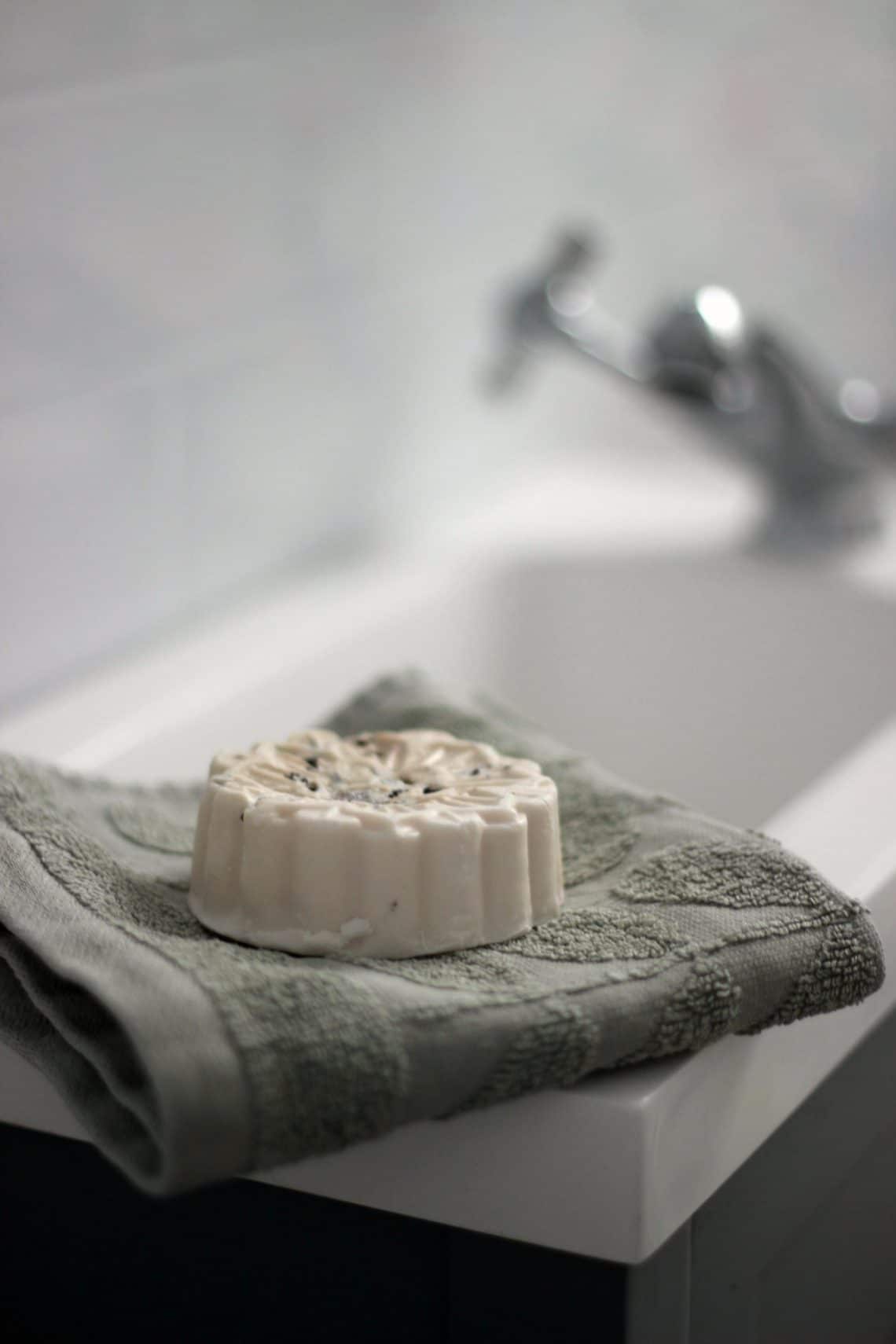
Since my teens, I’ve always sworn by the fact that soap and a flannel or reusable cotton round do the job of removing makeup superbly.
I wet the flannel with warm water and sit it on my face for a few seconds. Then I pop a little soap on my hands and rub the lather gently into my face. I then gently rub the flannel in circular motions to remove my makeup. Finally, I rinse the flannel and wipe my face clear of the soap.
I’m not fussy about which soap I use – I just use the same bar that I use to wash my hands and my body, although if you have sensitive skin you might want something specifically formulated for facial use. Here’s my guide to sustainable soaps, if you’re looking for a new brand.
My facecloths aren’t fancy, just run-of-the-mill ones I’ve had for years. Using a facecloth is slightly exfoliating, so you don’t even need to buy an exfoliator. I then pop the flannel straight into the washing machine once I’m done, or pop them in a wet bag ready for the next load. Easy!
2. Natural Oils
Most of the time, for my needs, soap does the job. However, if I’ve used mascara then I often find I need a little something else to shift it, that’s up to the job, but gentle on my eyes.
This is when I raid the kitchen cupboard for some natural oils. I promise I’ve not gone wild – most natural oils do a great job at removing makeup. This is because natural oils contain fatty acids and antioxidants, which help to break down makeup, dirt, and impurities on the skin, whilst their moisturising properties mean oils can effectively remove makeup without causing irritation or dryness.
Here are some oils, many of which you likely already have in your kitchen cupboard, all of which make excellent plastic-free makeup removers.:
- Avocado Oil
- Jojoba Oil
- Olive Oil
- Rapeseed Oil
- Sweet Almond Oil
Carbon footprint-wise, if you’re in the UK then rapeseed oil made in the UK probably has the lowest carbon footprint because it travels the least distance to get to us. Especially compared to avocado or almonds which are all grown much further afield. After all, just because something is plastic-free doesn’t make it better if it has to travel thousands of miles to reach us. Local is almost always better (even if it comes in plastic).
How do you remove makeup with oil? I find massaging in a tiny drop of oil with my fingers removes even the most stubborn of eye makeup.
I then run a flannel under warm water, before wringing it out so it’s not soaking wet. Next, I place the warm flannel on my face, leaving it for a few seconds before wiping the oil off. I then dry my face and moisturise as usual.
Whilst pouring oil down your drain is not recommended, this method does not block your drain, as you are using such minimal amounts of oil that is applied directly onto your skin and then wiped off with a flannel.
If your skin feels too oily after using the oil, you can use toner in a glass bottle to remove any residue.
You can also use oil to make homemade moisturising facial oil, which is great at keeping your skin soft and supple.
3. Solid Makeup Remover Bars
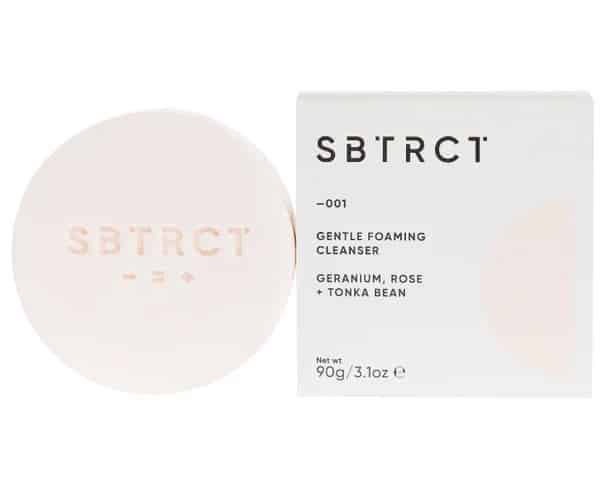
If the idea of using soap or oil on your face isn’t for you (I get it, it’s a bit of a leap), then SBTRCT’s Gentle Foaming Cleanser (£22), is a great option. Available at Naturisimo, this is a solid bar that rinses away without residue, leaving your skin soft, moisturised and clean, without feeling stripped or tight.
Made with vegetable-derived emollients, and scented with essential oils including geranium, rose and tonka, it’s a gentle yet effective way to remove makeup the plastic-free way.
Used daily, SBTRCT says its bar will last for 10 – 12 weeks, making it a cost-effective cleansing solution. What’s more, as it’s wrapped in paper in a cardboard box, there is zero plastic here.
4. Plastic-Free Cleanser
Another sustainable option is to opt for a plastic-free cleanser. I’m a big fan of Facetheory’s Clarifying Cleanser (£13). It’s a great zero-waste option – coming in a glass jar with a metal lid – both of which are fully recyclable.
Simply wet your face and rub a little bit of the cleanser in. Wipe with a cloth or cotton round, and then rinse. My skin always feels spotless, plus you only need a little bit at a time, so a jar lasts for ages!
As well as being plastic-free, Facetheory’s cleanser is vegan-friendly and cruelty-free. Plus it’s free of parabens, silicones, PEGs, SLS, SLES, and mineral oils.
5. Eco-Friendly Micellar Water
If you prefer to use a product that you don’t need to rinse off, then the good news is that micellar water has had an eco-friendly makeover.
Eco-conscious beauty brands like Evolve, offer eco-friendly micellar water (£20) which is made with natural and organic ingredients that are kinder to the environment. Plus it comes in a glass bottle that’s fully reusable and recyclable.
Simply apply to a reusable pad, and wipe it over your skin. The molecules in the water attract and remove your makeup, as well as any oil and dirt on your skin, without needing to rinse it off.
6. Reusable Makeup Remover Pads
Another way to zero-waste your beauty routine is to switch to reusable makeup remover pads.
You can buy a set from any online eco shop. I’m a fan of these cotton face scrubbies from Etsy as they give a good scrubbing action. If you prefer something softer, try these bamboo pads, which offer a gentler cleansing action. Either is a great buy if you are looking to swap from single-use wipes or pads.
You can also make your own makeup removal pads using this free crochet pattern. If you can crochet, it’s a great way to use up any odds and ends of wool to make something truly zero-waste.
If crochet is too tricky, then if you have an old towel (maybe one that’s got a few holes and you were thinking about binning) you can cut it up into squares to make your own pads. The only thing you might want to do is to hem the sides to prevent fraying.
Washing them is super easy. Check out my post on how to wash reusable makeup pads to learn how to shift any stubborn stains, and to help them last longer
What about DIYing Makeup Remover?
I’m a big fan of DIYing. I love making my own products and messing around in my kitchen. For the last little while, I have tried making my own makeup remover solution with a range of different ingredients.
In the end, I found nothing as simple, effective, low waste, and low cost at removing makeup as either soap or natural oil, or using a shop-bought cleanser. This served as a good reminder to me that not everything has to be complex to work!
Do you have a good plastic-free makeup remover solution? Are you a soap or oil fan? Maybe not convinced to make the switch?
PS: Here’s a natural makeup brush cleaner recipe that might be up your street too.
Found this post useful? Please consider buying me a virtual coffee to help support the site’s running costs.


